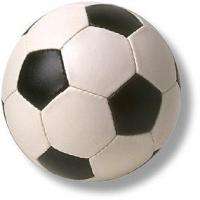A convincing calculation: ten soccer players ensure excitement

One ball, two goals and 22 soccer players – and the game can begin. But why are there ten players of one team on the field and no more or less? This is what Metin Tolan, professor for experimental physics at the University of Dortmund (Germany), tries to get to the bottom of in view of the World Cup.
No matter whether it’s the German professional soccer league or a friendly game - the important thing is the excitement. A simple calculation shows that the number of players is of great importance.
A regular field with 7,000 square meters naturally has room for more than 20 players. But when they stand too close together, the ball whirls around like a pinball and the field turns into an amateur soccer field. Here nobody can speak of controlled ball possession anymore. When there is too much distance between the players, the opposite phenomenon can be observed: the adversarial team takes too long to run after the ball and the game can not be gripping.
“The decisive factor is the time a player needs to catch a passed ball and to continue playing and the time the opponent needs to get the ball back”, Metin Tolan explains. The physicist has calculated that each of these reactions takes about three seconds. “The distance between the players is optimal when both sides are more or less equal. Then the game is smooth - and exciting”. And that is exactly the case when, besides the goal keepers, there are 20 players on the field.
Further numbers illustrate the dynamics of the popular sport: With 18 km/h the professionals cover an average of five meters per second on the field. Additionally Tolan found out that a ball can fly faster than the foot that hits it. The elasticity number of the ball gives it even more drive.
Source: Universitaet Dortmund















